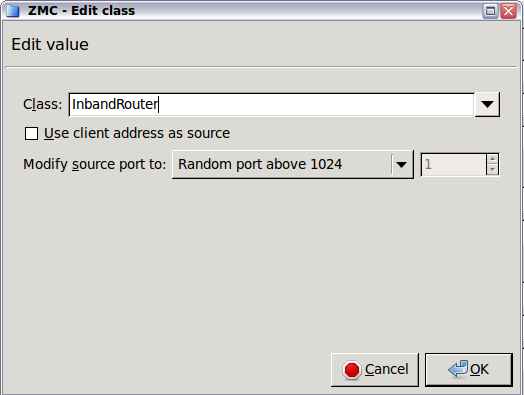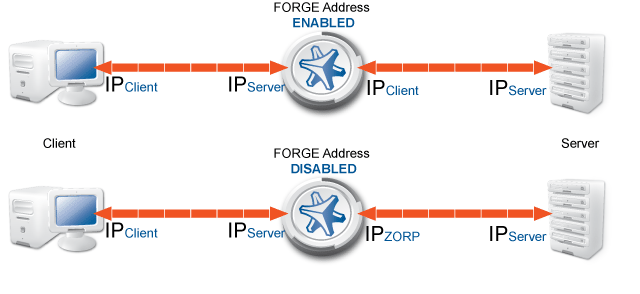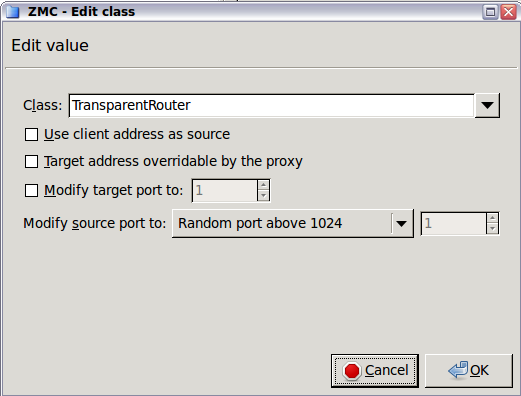InbandRouter determines the target address from information embedded in the transferred protocol. This is possible only for protocols that can have routing information within the data stream. Application-level Gateway can use InbandRouter with the HTTP and FTP protocols. InbandRouter has the following options.
By default, Application-level Gateway uses its own IP address in the server-side connections: the server does not see the IP address of the original client. By selecting this option, Application-level Gateway mimics the original address of the client. Use this option if the server uses IP-based authentication, or the address of the client must appear in the server logs.
| Note |
|---|
This option was called Forge address in earlier versions of PNS. |
| Note |
|---|
The IP address of the client is related to the source NAT (SNAT) policy used for the service: using SNAT automatically enables the Use client address as source option in the router. |
This option defines the source port that Application-level Gateway uses in the server-side connection. The following options are available:
Random port above 1024: Selected a random port between 1024 and 65535. This is the default behavior of every router.
Random port in the same group: Select a random port in the same group as the port used by the client. The following groups are defined: 0-513, 514-1024, 1025–.
Client port: Use the same port as the client.
Specified port: Use the port set in the spinbutton.
| Note |
|---|
This option was called Forge port in earlier versions of PNS. |
Published on June 04, 2020
© 2007-2019 BalaSys
Send your comments to support@balasys.hu





